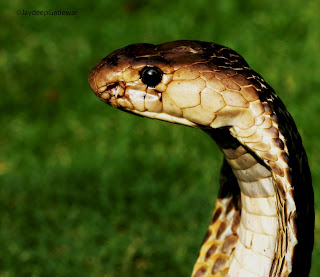
Asian Koel Male The Asian Koel is a large, long-tailed, cuckoo measuring 39–46 cm (15–18 in) and weighing 190–327 g .The male of the nominate race is glossy bluish-black, with a pale greenish grey bill, the iris is crimson, and it has grey legs and feet. The female of the nominate race is brownish on the crown and has refocus streaks on the head. The back, rump and wing coverts are dark brown with white and buff spots. The under parts are whitish, but is heavily striped. The other subspecies differ in coloration and size. The upper plumage of young birds is more like that of the male and they have a black beak. Song of male, India They are very vocal during the breeding season (March to August in South Asia), with a range of different calls. The familiar song of the male is a repeated koo-Ooo. The female makes a shrill kik-kik-kik... call. Calls vary across populations. You are lucky Dear koel male, At least some one listen to you & reply.




